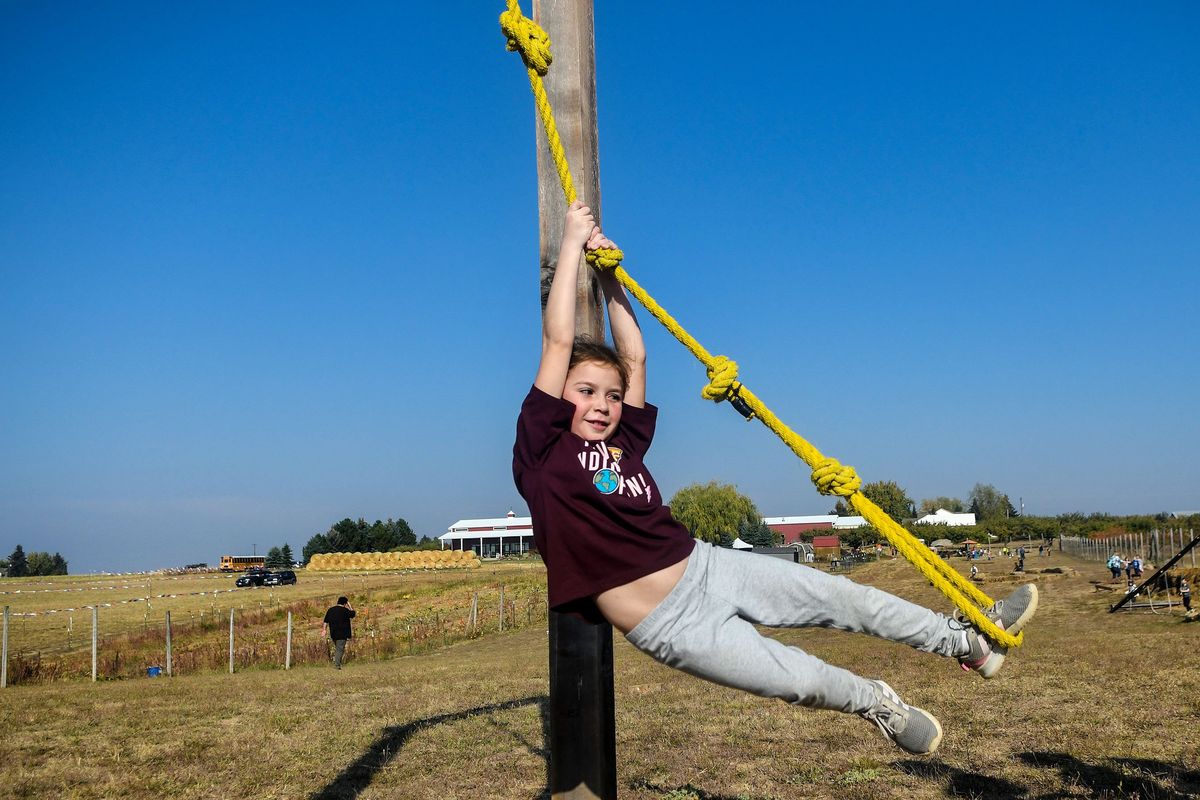Cold spring led to a late apple harvest in Green Bluff, but a warm October created perfect conditions for picking

In early August, Steve Cole’s phone was ringing off the hook with loyal customers calling to see when they could get some of Cole’s Orchard’s famous peaches.
The problem was the peaches weren’t ripe yet.
The farms on Green Bluff have faced a delayed harvest this year due to a cold spring.
Cole’s peaches weren’t ready until the middle of August, he said, but that late harvest didn’t affect sales.
“I sold every peach I grew,” he said.
Even in late October, Cole is still harvesting apples, a rarity during a typical growing season. He estimates most of his crops were delayed about two weeks.
At Hansen’s Green Bluff Orchard down the road, Derrick Hansen had a similar experience.
“Typically we’d be closing right about now,” he said. “We’re just hitting full stride in the apple harvest.”
Customers who arrived in late September or early October had a more limited selection than normal, but peak harvest coincided perfectly with the record-breaking run of 70-degree days this month.
“We’ve had San Diego weather for the last three weeks,” Hansen said. “It’s just gorgeous.”
Hansen is looking forward to the rainy weather forecast this weekend that will tamp down dust in the orchard and give people a perfect excuse to down some hot cider.
Todd Beck, owner of Beck’s Harvest House, said he experienced a prolonged bloom for most of his tree fruit. Instead of blooming for three or four days, blooms remained on trees for three weeks.
Not only did this delay the harvest, it changed the order of when different types of peaches were ripe.
Red Haven peaches are usually picked third among Beck’s varieties, but this year they were picked eighth. Peaches on the same tree ripened at different times, too, because they were pollinated at different times, often during different weather cycles.
“Especially with peaches, you notice you’d have one peach like this that is beautiful and one right next to it that’s little and green,” Beck said. “And again, they pollinated a week apart.”
Beck opens up each area of the orchard when it’s ready to be picked, he said.
“We just open it up when it’s ready,” Beck said. “That’s the nice thing with what we do in Green Bluff, is we have that flexibility.”
Beck said he feels lucky to be running a U-pick farm, and that he doesn’t envy commercial growers struggling to decide when to pick their fields.
The apple crop in Washington is expected to be down about 11% and two weeks late in comparison to last year, said Jon DeVaney, president of the Washington State Tree Fruit Association.
Unusually cool and damp weather in the spring affected pollination, DeVaney said.
“We had snow storms on blooming apple trees,” he said. “Bees really do not like to be flying around in the snow.”
Some blooms didn’t survive the cold and others weren’t properly pollinated, DeVaney said.
“As a result, many orchards have uneven crops on them and also uneven development in some cases,” DeVaney said.
An uneven crop can make it difficult for farmers to decide when to pick their field, DeVaney said. Picking a field is expensive, and most farmers can only do it once, even if a portion of the apples aren’t ripe, he said.
As farmers look toward November, they’re expecting to still be picking apples, but frost is a big concern, he said.
“Just because you’re two weeks behind, doesn’t mean winter will be any later,” he said. “They don’t want to be caught with fruit unharvested.”
While unharvested apples are a worry for commercial farms, orchard owners like Cole remain confident they’ll pick most of their crop.
“I’m getting sold out here,” Cole said. “I don’t’ think there’s going to be much of anything left at the end of next weekend.”